Border flowers play a crucial role in garden design, adding depth, color, and texture to the landscape. They serve as natural dividers between different areas of your garden or yard, creating visual interest and defining spaces. When creating a stunning garden, incorporating border flowers is an absolute must. Whether you have a small backyard or a sprawling landscape, border flowers can transform any ordinary space into a breathtaking oasis.
15 Best Border Flowers for Your Garden
Lavender: Adding Fragrance and Elegance
Lavender is a timeless favorite when it comes to border flowers. The delicate purple blooms of Lavender are not just visually appealing; they also attract bees and butterflies, making your garden come alive with pollinators. One of the best things about Lavender is its versatility. It can be planted as a low hedge, edging along pathways or borders, or even in containers for small spaces.
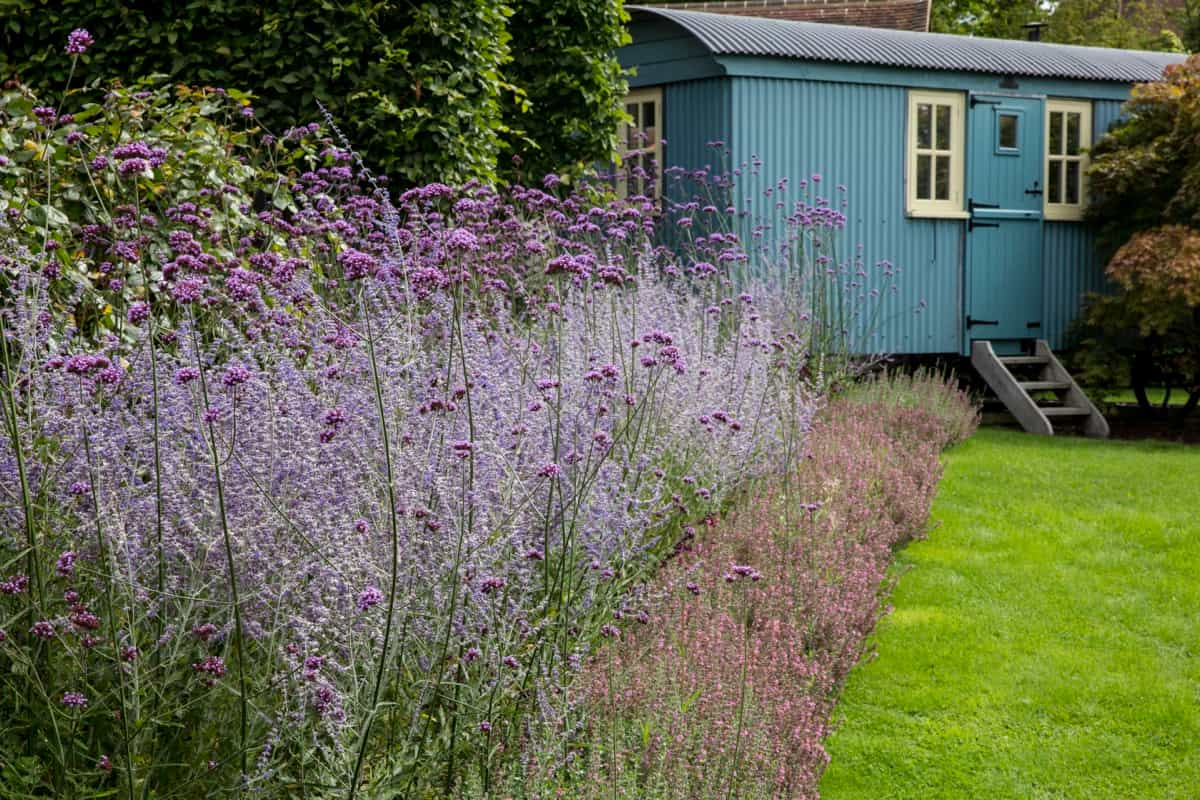
With different varieties available, such as English Lavender and Spanish Lavender, you have plenty of options to choose from. When it comes to care, Lavender thrives in full sun and well-drained soil. It’s drought-tolerant once established, meaning less maintenance for you. Just remember to prune it regularly after flowering to keep the plant neat and encourage more blooms.
Penstemon: Tall Spikes of Tubular Flowers
Penstemon is a stunning flower that adds vertical interest to any garden border. With their tall spikes of tubular flowers, Penstemons create a dramatic and eye-catching display. These flowers come in a variety of colors, including shades of pink, purple, red, and white. The tubular shape of the flowers makes them perfect for these creatures to feed on nectar.
So not only will you have a beautiful addition to your garden, but you’ll also be supporting important pollinator populations. They can tolerate drought conditions once established, making them ideal for water-wise gardens. These hardy perennials are known for their long blooming period from late spring through summer.
Blanket Flower: Sun-Loving and Drought-Tolerant
This vibrant bloom is not only sun-loving but also incredibly drought-tolerant, making it a perfect addition to your garden. With its fiery hues of red, orange, and yellow, the Blanket Flower brings warmth and energy to any border. Its daisy-like petals create a stunning contrast against its dark green foliage, adding visual interest and charm. But what truly sets this flower apart is its ability to thrive in challenging conditions.
Whether you live in a dry climate or simply want low-maintenance flowers, the Blanket Flower has got you covered. It requires minimal watering once established and can handle long periods of drought with ease. Not only does the Blanket Flower tolerate tough conditions, but it also attracts butterflies and bees with its nectar-rich blooms.
Salvia: A Burst of Color and Attracting Pollinators
Salvia is a stunning flower that adds a burst of color to any garden. With its vibrant blooms ranging from red and purple to blue and pink, it creates a focal point in your landscape. But Salvia doesn’t just bring beauty to your garden; it also attracts pollinators. These winged creatures are essential for plant reproduction, so having them visit your garden is beneficial for both you and the environment.
In case you missed it: From Seedling to Bloom: Tailoring DIY Flower Plants Fertilizers to Different Growth Phases

One of the reasons why Salvia is so popular with pollinators is its tubular-shaped flowers. These provide easy access for insects looking for nectar, making it irresistible to them. You’ll often find bees buzzing around these colorful blossoms, happily collecting pollen as they go. Not only does Salvia attract pollinators, but it also acts as a magnet for hummingbirds. These tiny birds are known for their love of nectar-rich flowers, and Salvia provides just that.
Watching these graceful creatures darting in and out of your garden is truly captivating. Another advantage of growing Salvia in your borders is its low-maintenance nature. It’s a hardy perennial that thrives in full sun and can also tolerate partial shade, making it suitable for various locations within your garden. Plus, once established, Salvia can withstand drought conditions better than many other plants.
Coneflowers: Easy to Grow and Long-Lasting
Coneflowers, with their vibrant and daisy-like blooms, are a popular choice for garden borders. These hardy perennials are not only easy to grow but also long-lasting, making them a favorite among both beginner and experienced gardeners. One of the great things about Coneflowers is their versatility.
They come in a variety of colors, from classic purple to pink, white, and even yellow. This means you can easily find the perfect shade to complement your existing garden color scheme. Another reason why Coneflowers are so beloved is their ability to attract pollinators. The cone-shaped centers of these flowers provide an abundant source of nectar, ensuring that your garden will be buzzing with life all summer long.
Coreopsis: Bright and Cheerful Blooms
Coreopsis, with its bright and cheerful blooms, is a must-have for any garden. These vibrant flowers come in various shades, from sunny yellow to deep reds and oranges. They add color to any border. One of the best things about Coreopsis is that it blooms all summer long. You can count on these beauties to keep your garden looking lively and colorful throughout the season. Their daisy-like flowers are perfect for attracting butterflies and other pollinators, making them not only visually appealing but also beneficial for your garden’s ecosystem.
In case you missed it: How to Grow Flowering Dogwood Trees: A Step-by-Step Guide for Planting to Care
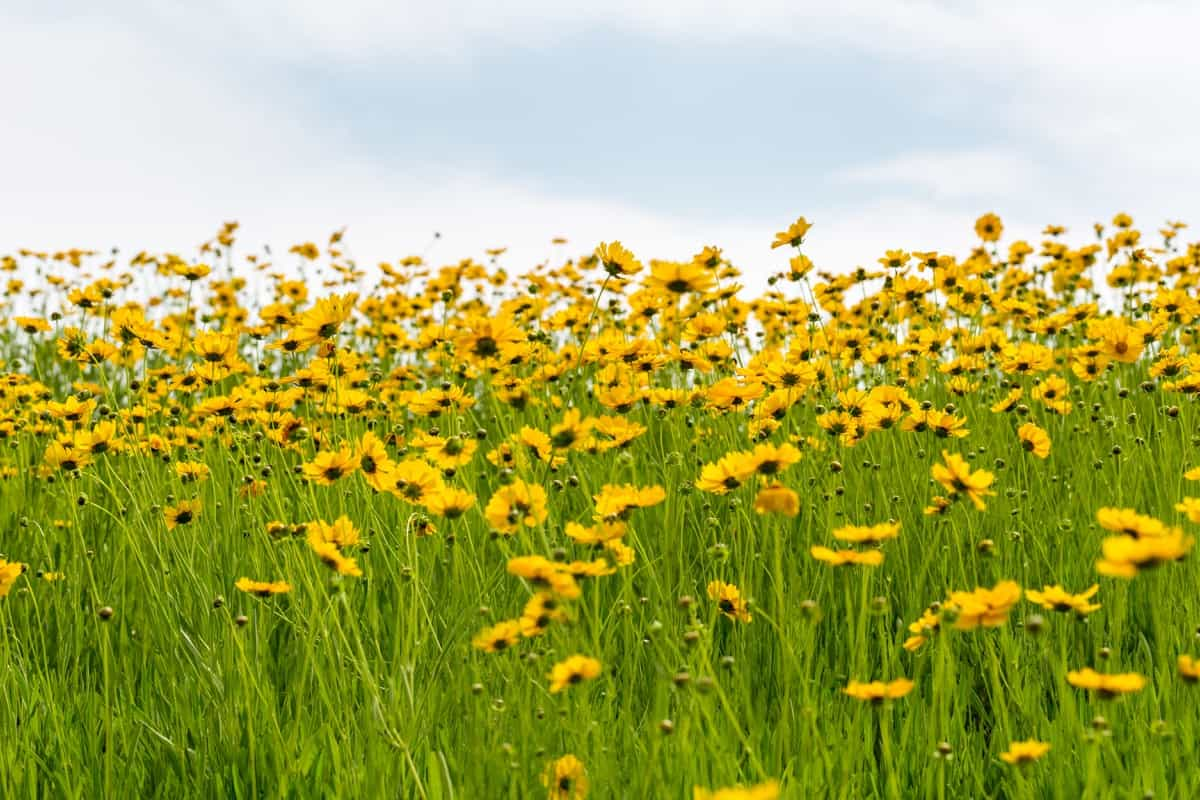
In addition to their stunning appearance, Coreopsis plants are relatively low maintenance. They’re also quite drought-tolerant once established, making them an excellent choice for those who live in dry or hot climates. Whether you choose to plant Coreopsis along a border or incorporate them into mixed flower beds, they will undoubtedly bring joy and vibrancy to your outdoor space.
Bee Balm: Attractive to Bees and Hummingbirds
Bee Balm is a vibrant and eye-catching flower that not only adds beauty to your garden but also attracts bees and hummingbirds. With its colorful petals and unique shape, this flowering plant is like a magnet for these pollinators. The bright red, pink, purple, or white flowers of the Bee Balm are irresistible to bees and hummingbirds.
The sweet nectar draws them in that the flowers produce. Not only does Bee Balm attract bees and hummingbirds, but it also provides them with an abundant source of food. The tubular shape of its flowers makes it easy for these pollinators to reach deep into the blossoms in search of nectar.
Daylilies: Reliable and Colorful Blooms
If you’re looking for a flower that will never let you down, Daylilies are the way to go. These stunning perennials are known for their reliability and vibrant blooms, making them a favorite among gardeners. With so many different colors and varieties to choose from, there’s bound to be a daylily that catches your eye.
One of the best things about Daylilies is their ability to thrive in various conditions. Whether you have full sun or partial shade, these hardy plants can handle it all. They also have a long blooming period, which means you’ll get to enjoy their beautiful flowers for weeks on end.
Echinacea: Drought-Tolerant and Long-Blooming
Echinacea is a stunning addition to the garden border. With its vibrant colors and unique cone-shaped center, this plant is sure to catch the eye. But it’s not just its beauty that makes Echinacea a popular choice among gardeners. One of the standout features of Echinacea is its ability to withstand drought conditions. This hardy perennial can tolerate dry spells without sacrificing its blooms. So, if you live in an area with hot summers or limited rainfall, Echinacea might be the perfect flower for your garden.
In case you missed it: How to Grow and Care for Crocosmia Flowers: A Step-by-Step Guide
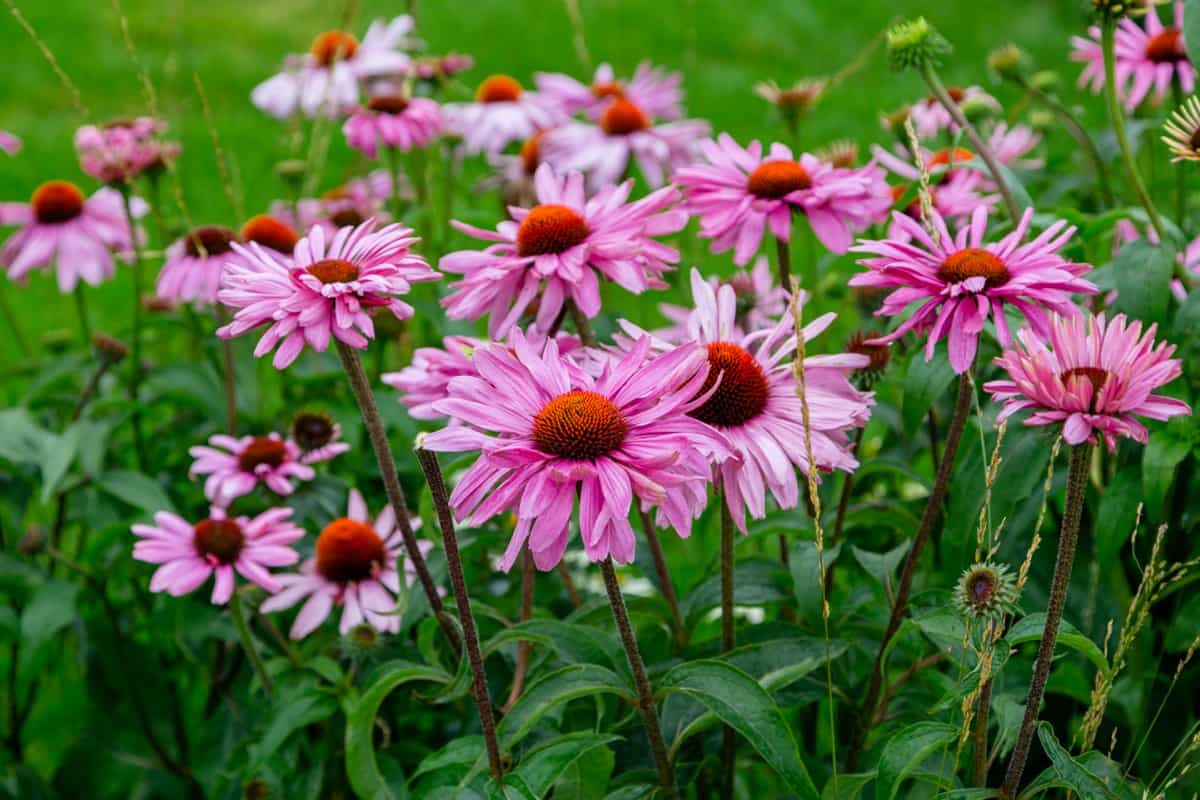
Russian Sage: Graceful and Airy Appearance
With its delicate, feathery foliage and tall spikes of Lavender-blue flowers, Russian Sage brings an ethereal beauty to any garden border. This perennial plant is known for its graceful and airy appearance that adds a touch of elegance to the landscape. One of the standout features of Russian Sage is its silver-gray leaves, which create a lovely contrast against other plants in the garden. The fine texture of the foliage gives it a soft and wispy look that sways gently in the breeze, adding movement and interest to your borders.
Sedum: Drought-resistant and Attractive to Butterflies
Sedum is a versatile and hardy border flower that deserves a spot in every garden. With its ability to withstand drought conditions, it’s the perfect choice for those who want low-maintenance plants. Not only does Sedum thrive in dry spells, but it also attracts butterflies with its vibrant blooms. One of the great things about Sedum is its wide range of colors and varieties. From deep purples to soft pinks and fiery oranges, there’s a Sedum out there for every gardener’s taste.
These beautiful flowers come in clusters atop succulent foliage, adding texture and interest to your garden borders. Butterflies are particularly drawn to these nectar-rich flowers, making them a delightful addition to any butterfly or pollinator garden. Another advantage of growing Sedums is their adaptability. They can grow well in various soil types and sun exposures. This makes them an excellent choice for both sunny border areas as well as spots with dappled sunlight throughout the day.
Black-Eyed Susan: Classic Summer Flowers
Black-Eyed Susan, with its vibrant golden petals and dark brown center, is a classic summer flower that adds a pop of color to any garden. These cheerful blooms are a favorite among gardeners for their easy care and ability to attract pollinators. With their daisy-like appearance, Black-Eyed Susans create a charming cottage garden feel.
They can be planted in borders or mixed with other perennials for added visual interest. Whether you choose to plant them in mass groupings or scatter them throughout your garden, these flowers will surely make a statement. One of the best things about Black-Eyed Susans is their ability to thrive in hot and dry conditions.
In case you missed it: How to Grow Trillium Flowers: A Step-by-Step Guide for Planting to Care
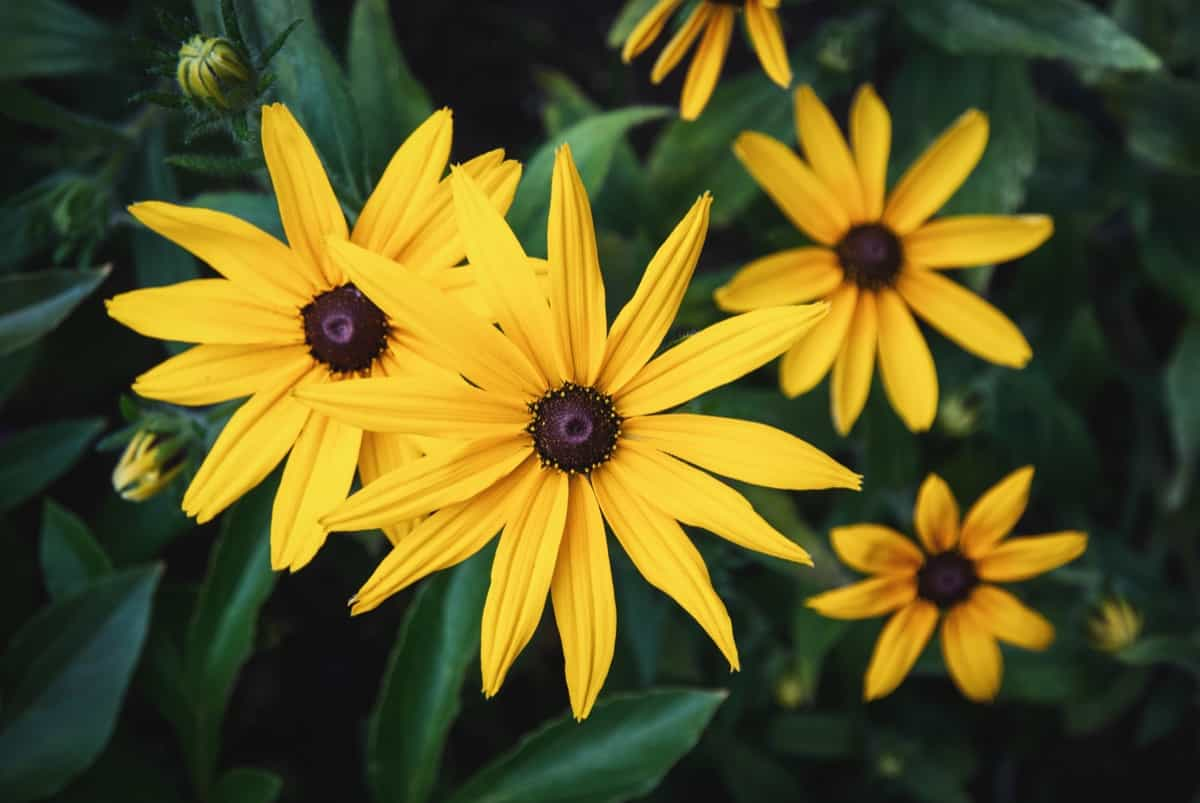
They are drought-tolerant once established, making them low-maintenance plants that are perfect for busy gardeners. Plus, they have a long blooming period from early summer through fall, providing continuous color when many other flowers start to fade. Not only do Black-Eyed Susans bring beauty to your garden, but they also attract bees and butterflies.
Phlox: Fragrant and Colorful Clusters
With its clusters of delicate, star-shaped flowers, it creates a stunning display that will surely catch the eye of anyone passing by. One of the standout features of Phlox is its intoxicating fragrance. As you stroll through your garden, the sweet scent wafting from these blooms will envelop you in an enchanting aroma. Not only does Phlox smell amazing, but it also comes in various colors.
Whether you prefer a monochromatic look or want to create an explosion of contrasting shades, Phlox has got you covered. Another great thing about Phlox is its ability to attract pollinators. The nectar-rich flowers serve as irresistible feeding stations for these beneficial insects, helping to support their populations and promote biodiversity in your garden.
Catmint: Low-maintenance and Fragrant
Catmint is a fantastic choice for a garden border. Not only is it low maintenance, but its fragrant blooms will also add a delightful aroma to your outdoor space. Catmint produces clusters of small flowers in shades of blue or Lavender that attract bees and butterflies. One of the best things about Catmint is its ability to thrive in various soil conditions and climates. It’s also drought-tolerant, so you don’t need to worry about watering it constantly during dry spells.
Another great feature of Catmint is its long blooming period. From early summer through fall, you’ll be treated to continuous bursts of color and fragrance in your garden. Plus, the blooms make excellent cut flowers for indoor arrangements. In terms of maintenance, Catmint requires very little attention from you. Simply trim back the spent flowers after they fade to encourage new growth and remove any dead foliage in spring.
Yarrow: Versatile and Hardy
Yarrow is a versatile and hardy flower that deserves a spot in any garden. With its delicate fern-like foliage and clusters of tiny flowers, Yarrow adds a touch of whimsy to any border. One of the best things about Yarrow is its versatility. It is available in a wide range of colors, including white, yellow, pink, and red. This means you can easily find a variety that complements your existing color scheme or create an eye-catching display with multiple hues.
In case you missed it: 15 Gardening Mistakes to Avoid This Fall: For Vegetables, Flowers, Fruits, and Herbs
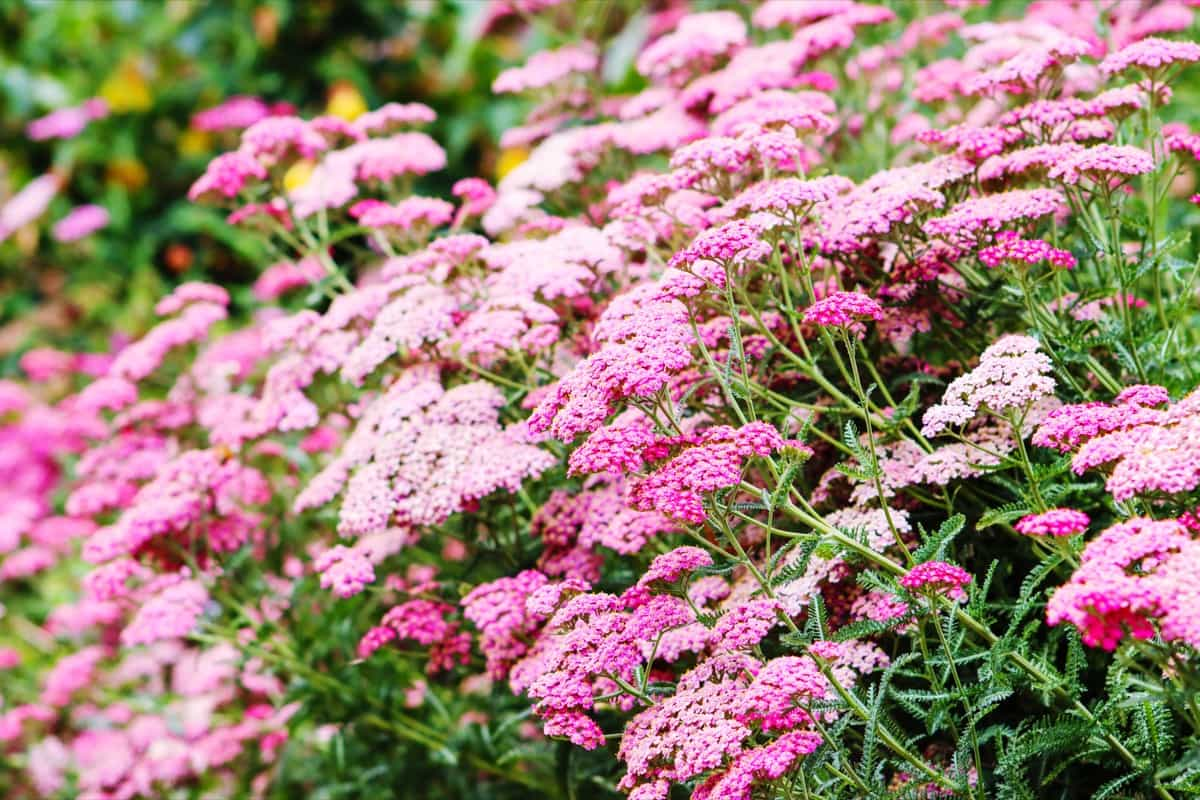
Once established, it can withstand drought conditions and requires minimal watering. This makes it perfect for those who need more time or inclination to fuss over their garden. Another benefit of Yarrow is its long flowering period. From early summer through fall, you can enjoy continuous blooms from this hardworking perennial.
Conclusion
Adding border flowers to your garden is a fantastic way to enhance its beauty and create a vibrant and inviting space. Remember to consider factors such as sunlight requirements, soil conditions, and water needs when selecting border flowers. With careful selection and proper care, these beautiful border flower varieties will thrive in your borders year after year. So, get ready to transform your garden into a colorful oasis with these amazing border flowers.
- Broccoli Seed Germination and Selection
- Asparagus Seed Germination and Variety Selection
- Seasonal Flower Gardening: Best Practices for Spring, Summer, Fall, and Winter
- How to Grow Hibiscus from Flower
- Plantation Ideas for Home Decoration: A Beginners Guide
- Flower Garden Designs and Layouts for Beginners
- Planting and Spacing Techniques in Papaya: A Beginner’s Guide
- Growing Gold: Essential Techniques for Planting Pineapples
- How to Make Kalanchoe Plant Bushy: Home Remedies and Solutions
- 11 Reasons Why Your Gardenia is Not Blooming: Home Remedies and Solutions
- Eco Elegance: The Guide to Designing a Drought-Tolerant Landscape
- Gardening on a Slope: Strategies for Hillside Landscaping
- Nourish and Flourish: Top Organic Mulches for Thriving House Plants
- Everything You Want to Know about Indian Mogra Flower: Discover Uses and Growing
- Green Thumb Success: Expert Tips for Cultivating Greenhouse Pumpkins All Year Round
- Maximize Growth & Flavor: The Ultimate Guide to Companion Planting in Herb Gardens
- How to Control Rhododendron Problems Naturally: Home Remedies and Organic Ways to Fix Them
- Natural Magic: The Remarkable Benefits of Cinnamon for Plants
- Best Steps to Revive Dying Tulip with Natural and Organic Treatment
- 10 Reasons Why Your Angel Trumpet is Not Blooming: Remedies and Treatment
- How to Fix Periwinkle Leaf and Flower-Related Problems: Natural Remedies and Solutions
- How to Fix Zinnias Leaf and Flower Problems: Discover Natural and Home Remedies
- Organic Steps to Induce Lemon Tree Flowers: A Comprehensive Guide
- Bloom Booster: Crafting the Perfect Homemade Bougainvillea Fertilizer
- Optimizing Growth: A Guide to Applying NPK Fertilizer for Potted Plants
- 10 Best Homemade Fertilizers for Rubber Plant: DIY Recipes and Application Method
- How to Boost Female Pumpkin Flowers: Effective Steps for More Flowers and High Yields
- Transform Your Indoor Garden: Top Benefits of Pink Salt for Houseplants
- 10 Best Homemade Fertilizers for Peacock Plants (Calathea): Easy DIY Guide
- Unlock Blooms: 9 Reasons Why Your Potted Chrysanthemum is Not Blooming
- 8 Reasons Why Your Potted Hibiscus is Not Blooming: Fix it with Simple Solutions
- Unlock Blooms: 9 Key Reasons Your Potted Frangipani Won’t Flower
- 10 Reasons Why Is My Ice Plant Not Blooming: Remedies and Treatment
- 10 Reasons Why My Potted Hydrangea Not Blooming: Treatment and Remedies
- 10 Reasons Why is My Wisteria Not Blooming: Remedies and Treatment
- 10 Reasons Why is My Goldfish Plant Not Blooming: Remedies and Treatment